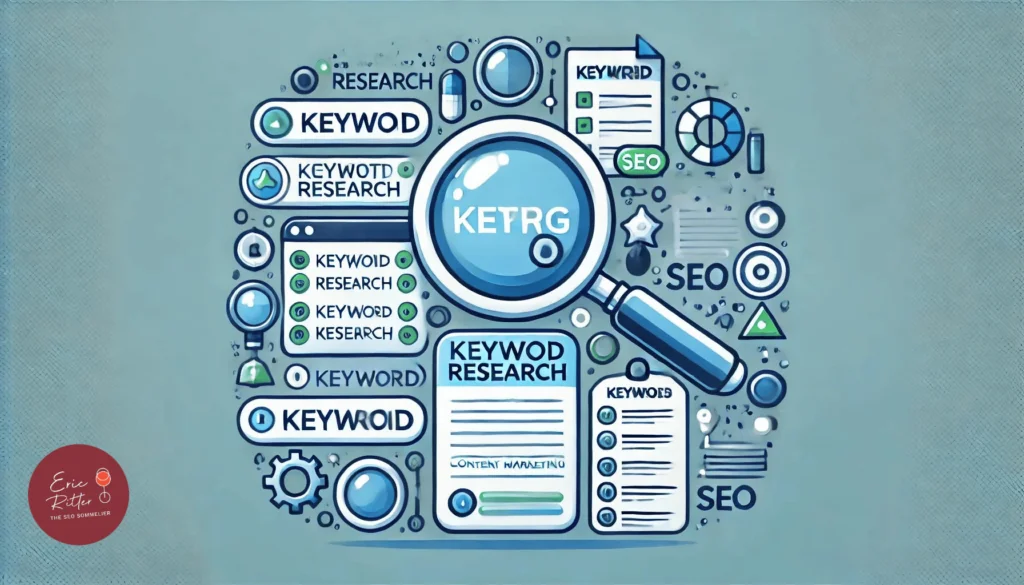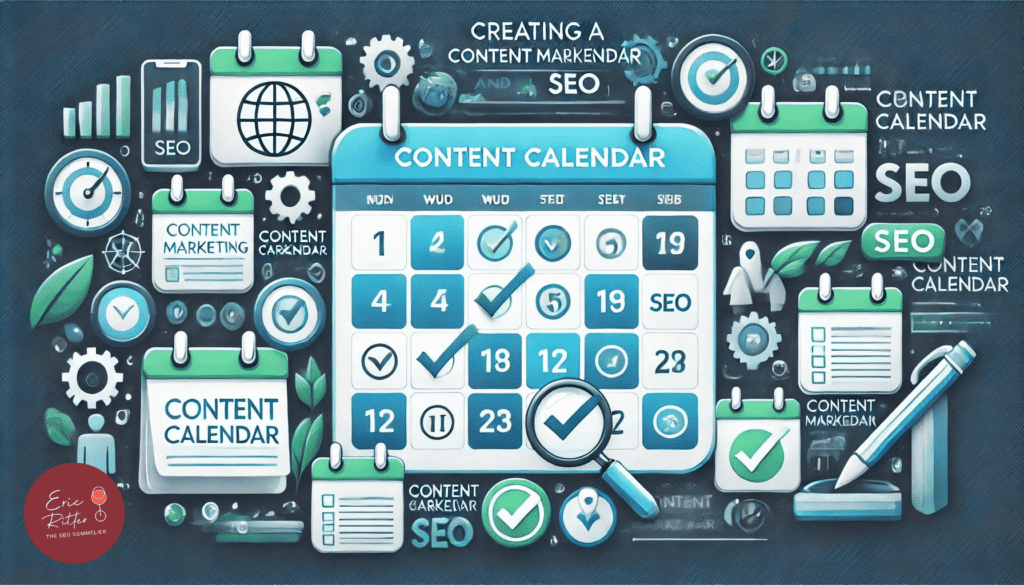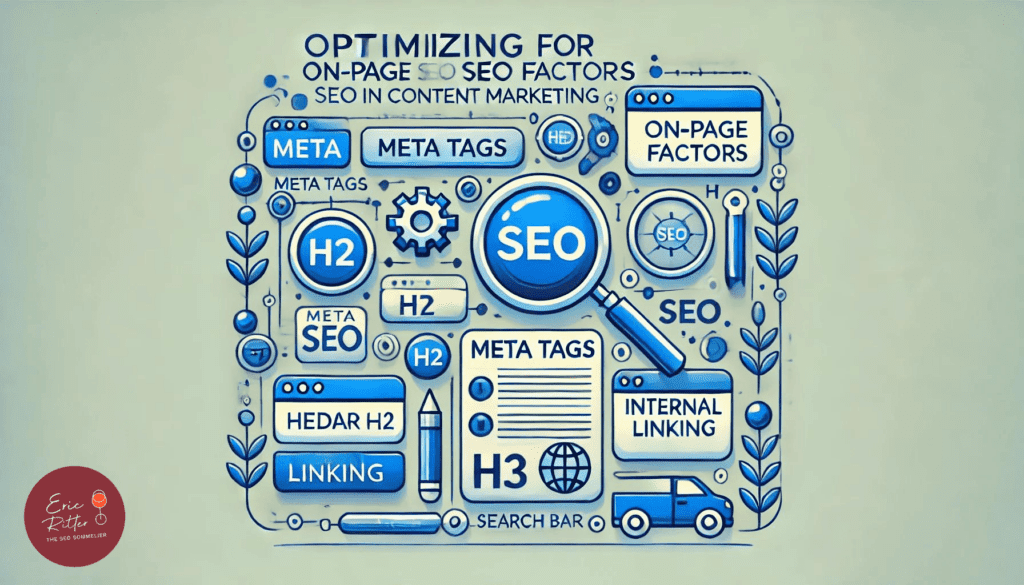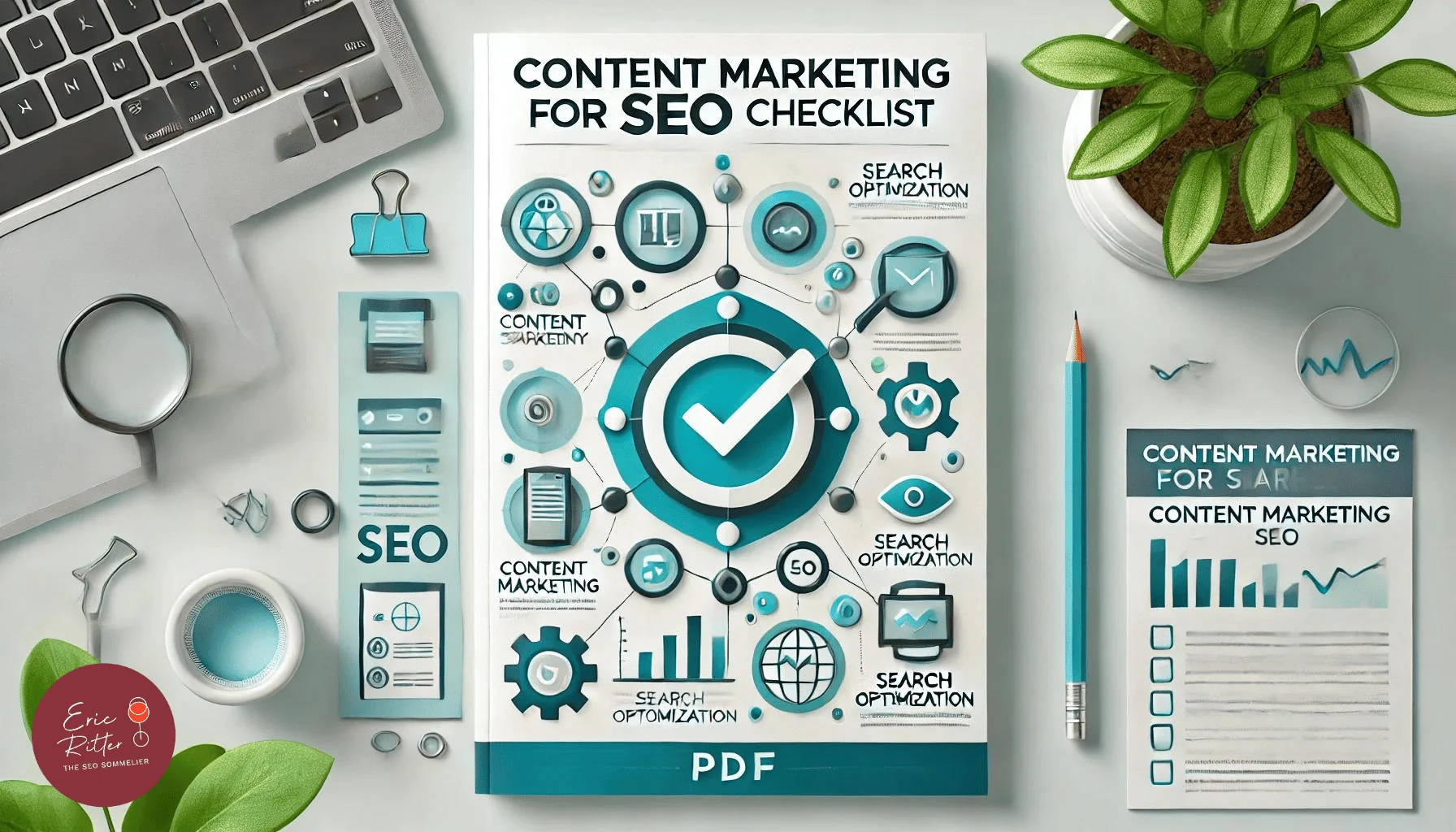Content Marketing for SEO Checklist: Your Ultimate Guide to Success
In today’s crowded digital landscape, it’s not enough to just create content—you need content that works for you. The right content marketing strategy does more than just fill up your blog; it drives targeted traffic, builds your brand’s authority, and converts visitors into customers. If you’re looking to master this approach, you’ve come to the right place. This Content Marketing for SEO Checklist is your step-by-step guide to optimizing your content strategy for search engines while delivering real value to your audience. And if you want to, feel free to skip to the end to download your own checklist as a PDF.
Why Content Marketing for SEO Matters
When done right, content marketing isn’t just about putting words on a page—it’s about delivering relevant information that ranks well in search engines, attracts your ideal audience, and ultimately drives conversions. Here’s how effective content marketing for SEO can make a difference:
- Rank Higher for Relevant Keywords: By targeting the right keywords, you increase your chances of appearing on the first page of search results.
- Attract Organic Traffic: Quality content that answers users’ questions can consistently bring in traffic without relying on paid ads.
- Establish Your Brand as an Authority: Valuable, informative content builds trust and positions your brand as a leader in your industry.
- Guide Users Through the Buyer’s Journey: Effective content marketing moves potential customers from awareness to decision, making it easier to convert leads into sales.
Ready to take your content marketing to the next level? Let’s dive into the actionable steps laid out in this content marketing for SEO checklist.
What You’ll Find in This Checklist
This guide is packed with everything you need to plan, create, and optimize your content strategy. Inside, you’ll discover:
- Thorough Keyword Research: How to identify the right keywords that resonate with your audience.
- Content Calendar Creation: Tips for staying consistent and organized with your content efforts.
- High-Quality Content Creation: Best practices for crafting engaging, search-optimized content.
- On-Page SEO Optimization: Key techniques to ensure your content is technically sound and easy to find.
- Content Promotion Strategies: Ideas for distributing your content across multiple channels.
- Results Measurement: How to track performance and make data-driven improvements.
Each section is paired with pro tips and links to additional resources to give you that extra edge.
The Essential Content Marketing for SEO Checklist
Let’s break down each section of this checklist with actionable steps and insights.
1. Conduct Thorough Keyword Research

Keyword research is the foundation of successful content marketing. Without understanding what your audience is searching for, even the best content can miss the mark.
Keyword Research Action Steps:
- Identify Core Topics: Focus on topics that align with your business goals and audience needs.
- Use Keyword Research Tools: Leverage tools like Google Keyword Planner, Ahrefs, or SEMrush to uncover search volumes and relevant terms.
- Analyze Competitor Keywords: Spot gaps in your competitors’ strategies and find opportunities for your content.
- Prioritize Search Intent: Tailor your content based on whether users are looking for information, making comparisons, or ready to make a purchase.
Keyword Research Helpful Links:
Pro Tip: Don’t just chase high-volume keywords. Relevant long-tail keywords often have less competition and are more likely to attract users who are ready to take action. For local businesses, make sure your keywords include location-specific terms.
2. Create a Content Calendar for Content and Stick to It

A content calendar is your roadmap to consistency. It helps you stay organized, align content with business goals, and ensure timely delivery.
Content Calendar Action Steps:
- Outline Key Dates: Plan content around significant events like product launches or seasonal trends.
- Balance Content Types: Incorporate a mix of blog posts, videos, and infographics to keep your audience engaged.
- Assign Deadlines: Hold yourself and your team accountable by setting realistic deadlines.
- Review and Adjust Quarterly: Reevaluate your calendar regularly to keep up with changes in your strategy.
Content Calendar Helpful Links:
- How to Create a Content Calendar
- Google Sheets Content Calendar Template
- Using Trello for Content Planning
Pro Tip: Start with simple tools like Google Sheets before upgrading to platforms like Trello or Asana. These tools make it easy to color-code and organize content by type or campaign.
3. Focus on High-Quality, Engaging Content

Content quality is what sets you apart. Google’s algorithm favors in-depth, well-written content that keeps readers engaged.
High-Quality Content Action Steps:
- Use Data-Driven Insights: Let your keyword research guide the structure and topics of your content.
- Maintain Optimal Word Count: While it varies by topic, aim for at least 1,200 words for in-depth articles.
- Incorporate Visuals: Break up your content with relevant images, infographics, and videos.
- Write for the User First: Focus on delivering value; SEO will follow naturally.
High-Quality Content Helpful Links:
Pro Tip: Videos are a great way to boost engagement and keep visitors on your page longer. Consider adding short clips or explainer videos to complement your written content.
4. Optimize Content for On-Page SEO Factors

On-page SEO is about making your content easy to find and understand for users and search engines.
On-Page SEO Optimization Action Steps:
- Craft Compelling Meta Titles and Descriptions: Include keywords but focus on writing for clicks.
- Use Header Tags Strategically: Break content into sections with keyword-rich headings (H2, H3, etc.).
- Optimize Images: Compress images to improve load speed and include keyword-rich alt text.
- Add Internal and External Links: Guide readers to other relevant content on your site and link to credible external sources.
On-Page SEO Optimization Helpful Links:
Pro Tip: Use plugins like Yoast or Rank Math to get real-time feedback on your on-page SEO. These tools offer guidance on keyword usage, readability, and more.
5. Promote Content Through Various Channels

Even the best content won’t drive results if it doesn’t reach the right audience. Promotion connects your strategy with distribution channels.
Content Promotion Action Steps:
- Leverage Social Media: Share content across platforms like LinkedIn, Facebook, and Twitter, tailoring your message for each.
- Build an Email Strategy: Use newsletters and drip campaigns to keep your audience engaged.
- Repurpose Content: Transform blog posts into infographics, videos, or social snippets to extend reach.
- Engage in Content Syndication: Share your content on industry blogs or third-party platforms for more exposure.
Content Promotion Helpful Links:
Pro Tip: Use UTM parameters to track where your traffic is coming from and measure the effectiveness of each promotion channel.
6. Measure the Results and Impact of Your Content Marketing

To fine-tune your content strategy, you need to understand what’s working and what’s not. Analytics is the key.
Analytics Action Steps:
- Set Clear KPIs: Define success metrics—whether it’s traffic, engagement, or conversions.
- Monitor Content Performance: Track key metrics like page views, bounce rate, and time on page using Google Analytics.
- Evaluate Keyword Rankings: Keep an eye on how well your content ranks for your target keywords.
- Adjust Based on Data: Refine your strategy based on performance insights and focus on what works.
Analytics Helpful Links:
Pro Tip: Don’t forget about qualitative data—get direct feedback from your audience to understand what content resonates most.
Industry Trends in Content Marketing for SEO
The world of content marketing is always evolving. Here are a few trends to watch:
- The Rise of Video Content: With platforms like YouTube and TikTok leading the charge, video is becoming a dominant form of content.
- Voice Search Optimization: As voice search grows, optimizing for conversational queries and long-tail keywords is increasingly important.
- AI-Generated Content: While human-driven content still reigns supreme, AI tools can help streamline content creation and optimization.
Special Content Marketing Considerations for Multi-Location Businesses
If your business operates in multiple locations, your content marketing strategy needs to be adaptable. Here’s how to tailor your approach:
- Create Location-Specific Pages: Each page should be optimized for the specific location, with unique content and local keywords.
- Manage Local Listings: Ensure each location’s NAP (Name, Address, Phone) is consistent across directories.
- Localize Content: Include reviews, testimonials, and blog posts relevant to each community you serve.
Why This Content Marketing for SEO Checklist Is Your Secret Weapon
By following this content marketing for SEO checklist, you’ll be better equipped to attract, engage, and convert your target audience. Whether you’re managing a single brand or multiple locations, these steps will help you build a strategy that works.
Download the Content Marketing for SEO Checklist Now
Ready to dive deeper into content marketing for SEO? Download the full checklist to get step-by-step instructions and pro tips for optimizing your content strategy. If you’re looking for a more personalized assessment, contact Eric Ritter, the SEO Sommelier, for a Neighborly Roadmap tailored to your business.



